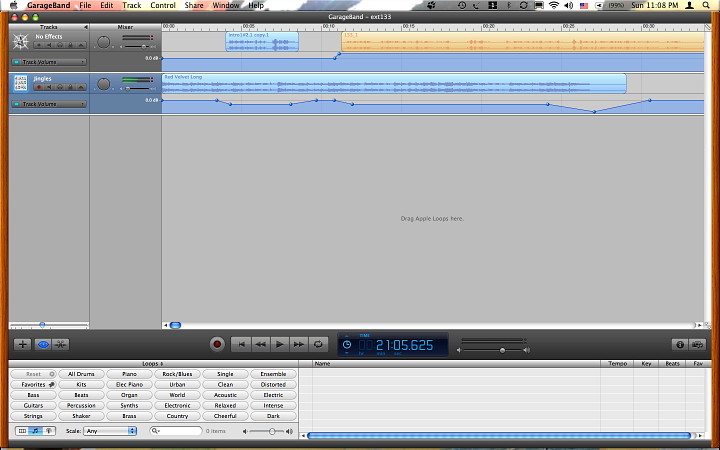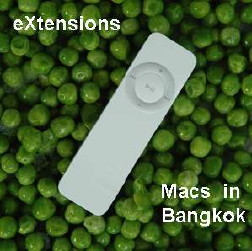|
|
I created the first podcasts simply because I could. While examining the new use of technology combining sound (or video) files with delivery using RSS (really simple syndication), I made my own as an experiment. I deliberately make the podcast with the barest of technology: no studio for me. I sit in a chair and record into my MacBookPro without even a proper microphone. If I can do it under these circumstances, anyone can. I do turn off the fans while recording as one concession: these create considerable noise in any recording. I did try to create a second podcast for my students, hoping that the input would help them improve their English. This trial suffered from a lack of good material and a lack of time. I concentrated my efforts, therefore, on the original podcast which is based on the weekly eXtensions column, rounded out with news. As well as an alternative way of receiving the column, it was meant as a way for non-native speakers to be able to listen and read at the same time. For this reason, although I try to make it sound natural, the podcast is heavily scripted and I edit the soundtrack to remove errors, often re-recording to make it sound right. I co-hosted a 3-month radio program in America (WGLT) several years ago. At the end I was presented with a tape of out-takes: splutters, mis-speakings, coughs and sneezes. I have additional problems now, when I record because of traffic and have to cut the noise of rumbling trucks as well as other unwanted sounds, like screaming kids. I choose the recording time carefully. I do not use the version of the column that is printed in Wednesday's Bangkok Post, Database. With time constraints, I record a couple of days before publication and sometimes there are editing changes. Keeping to the original, online version ensures that the sound and text are the same.
Another focus might be on software of interest, such as the release of Leopard, or a specific application that changes the way we work: iLife or iWork are examples. While I am collecting these, I add ideas and comments: it is not just a service for repeating what has already been printed. In the last year, I have used the notes not only as a script but to form an online resource with links to many of the items covered. This adds to the value for those listening and reading, as the whole podcast (which is usually about 20 minutes) can be followed. Texts are two-dimensional, but when read out with the proper emphasis become more useful to non-native speakers. That emphasis can also help get over my real intents, which may be criticism or irony. In the last few months, I also added a direct link to the sound file, so that anyone may listen without needing to subscribe, although subscribing would enable direct transfer to an MP3 player. To save space I remove the sound files after about ten weeks: the texts remain.

Recently, the final recording was some 24 minutes, which is too long, both in terms of downloading and (more particularly) for uploading: my internet provider sometimes sags and what usually takes five minutes can sometimes lengthen to thirty. The final version was about 21 minutes. Although I cut the sound file, I kept some of the ideas in a section at the end of the text. Once recorded, I drag the mp3 files into GarageBand where I can easily add pre-recorded loops to my voice-track. This gives me better quality music during the podcast. I also use my own voice loops to standardise the introduction and endings. Once completed, I export the file with one click to iTunes where I add artwork. I can then upload all related files to my website.
|
|
 At the end of last year I met the editor, Tony Waltham, over a meal. We had a wide-ranging discussion on computers and other aspects of technology in Thailand. While chatting, the
At the end of last year I met the editor, Tony Waltham, over a meal. We had a wide-ranging discussion on computers and other aspects of technology in Thailand. While chatting, the  While I am recording, I add the elapsed time to the top of some paragraphs to provide a guideline of where I might cut when done.
While I am recording, I add the elapsed time to the top of some paragraphs to provide a guideline of where I might cut when done.